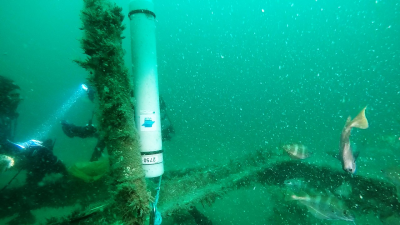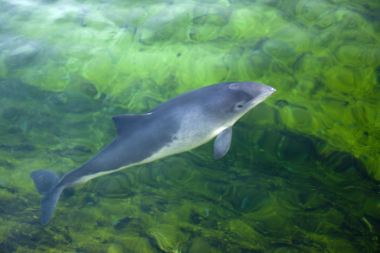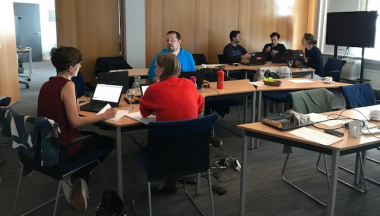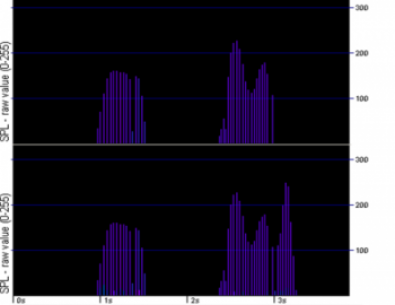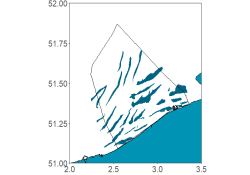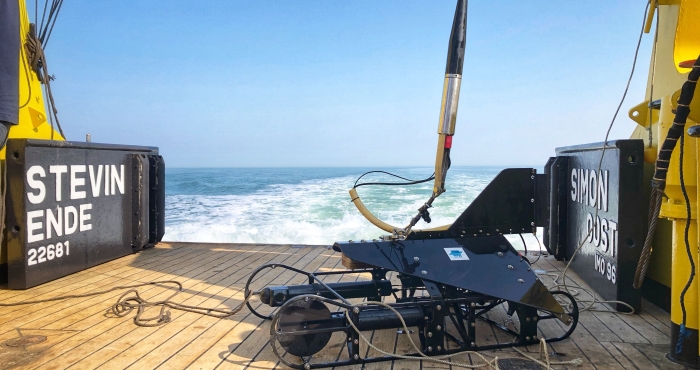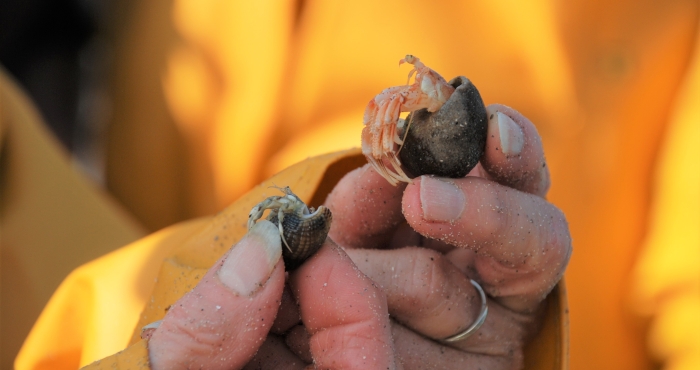Scripts
All data, R scripts and R markdown documents used in this workshop were made available in Github through the LifeWatch GitHub page.
Tutorials
Try out some C-POD data exploration for yourself with the tutorials on Data preparation and exploration, Mapping and Time series. More LifeWatch tutorials are available in the Marine Virtual Research Environment (Marine VRE).
Master thesis projects
Two workshop participants took the data even further in their Master’s dissertations! Benefiting from the workshop’s insights, they investigated porpoise distribution in collaboration with OD Nature and VLIZ. One student worked on the seasonal presence and distribution of harbour porpoise in the BPNS, while the other project focused on porpoise density estimates from both aerial surveys and Passive Acoustic Monitoring.
Augustijns, T. (2018). Harbour porpoises in the Belgian Part of the North Sea: Using passive acoustic monitoring to determine spatio-temporal patterns in distribution and feeding behaviour. MSc Thesis. Faculty of Sciences, Biology Department, Research Group Marine Biology: Gent. 47 pp.
Buyse, J. (2017-2018). Monitoring of harbour porpoise (Phocoena phocoena) density in the Belgian part of the North Sea using aerial surveys and passive acoustic monitoring. MSc Thesis. Oceans & Lakes, Interuniversity Master in Marine and Lacustrine Science and Management: Antwerpen, Gent and Brussel. 13 [Literature review] + 32 [Manuscript] pp
News
LifeWatch Data Analysis Workshop: LifeWatch Cetacean passive acoustic sensor network
New in the Belgian LifeWatch Marine Observatory: Cetacean Passive Acoustic Network
Contact
E-mail: Elisabeth.Debusschere@vliz.be
Tel.: +32-(0)59-34 01 81
To learn more about LifeWatch Belgium, feel free to contact info@lifewatch.be.
Institutes
The Flanders Marine Institute (VLIZ) coordinates the marine components of the Belgian LifeWatch project. In this framework, VLIZ regularly organizes LifeWatch workshops and events to bring together developers, users and experts.
Participants of the data analysis workshop for the cetacean passive acoustic sensor network included researchers from the Operational Directorate Natural Environment (OD Natuur), the Marine Biology research group of Ghent University and VLIZ. OD Natuur are now also using the EPAN data portal to store their data.
Citation
Flanders Marine Institute (VLIZ), Belgium (2015): LifeWatch observatory data: passive acoustic network (CPOD) for Cetacean detection.
Useful links
Cetacean passive acoustic network: Learn about the hydrophone network of the LifeWatch Observatory.
EPAN: Access, store and share passive acoustic data on the European Passive Acoustic Network data platform.
Data explorer: Access and explore the cetacean detection data with the LifeWatch data explorer.
LifeWatch GitHub: Find the scripts and C-POD data that were used during the LifeWatch Data Analysis Workshop.
Marine VRE: Use the developed web services of the LifeWatch Marine Virtual Research Environment.
LifeWatch workshops and events: Past and future events organized by LifeWatch Belgium.

